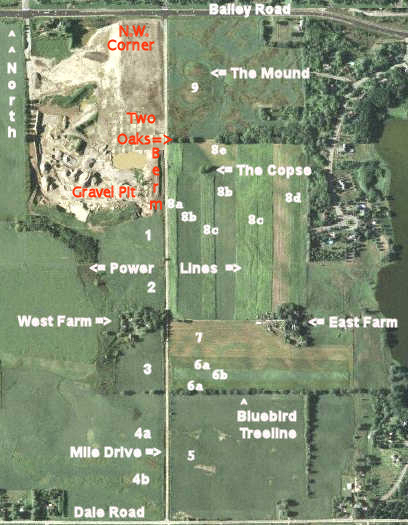
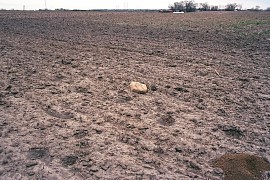
|
|
Rocks are the scourge of the farmer. Through the cycle of freezing and thawing, they work themselves
up out of the ground and onto the surface. Then they have to be removed or they can damage farm
implements. Lots of times farmers make rock piles in out of the way gullies or road ditches. In
the foreground you can see a pocket gopher mound.
|
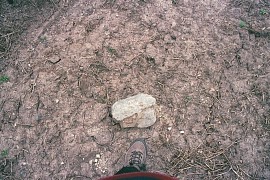
|
|
My foot shows how big this rock is.
|
|
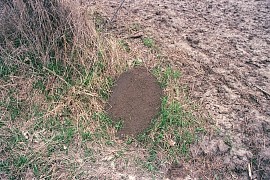
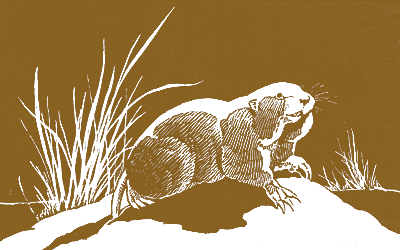
Here is a mound of dirt made by a pocket gopher - a rodent. The plains pocket gopher (Geomys bursarius L.)
eat mostly plant roots.
Pocket gopher bring loosened soil and rocks from excavated tunnels to
the surface. It has been estimated that an average pocket gopher can move over 1 ton of soil to the
surface each year. Grotesque but well suited to
subterranean life, they have very short legs, huge front
feet and claws, large heads with tiny ears, and protruding teeth. They are usually brown, measure
up to 13 inches long, and weigh about a pound. Food is carried in fur-lined cheek pouches. They
are seldom seen out of their burrow, yet are active day and night. Pocket gophers are a staple
in the diet of many predators. Return to Animals
|
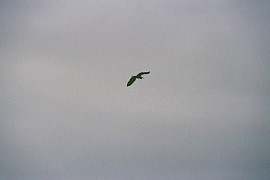
Blue Heron moving between food sources. I will have a better picture later in the year.
|
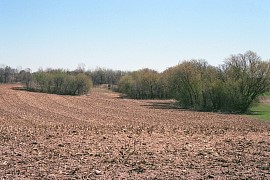
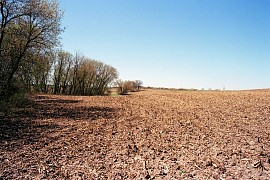
The trees that extend from Two Oaks. The rightmost picture is taken from the bottom of the field
looking back up toward the road. I will have to re scan these pictures to see if I can make the
resolution better.
|
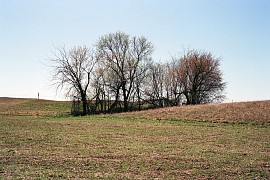
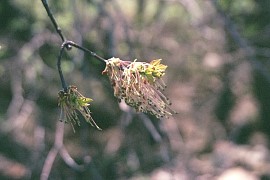
The trees in The Copse are beginning to leaf out - here is a very intricate flowering bud of
the box elder (Acer negundo L.) - an extremely prolific native.
Box elder is dioecious: the "male" plants bear stamens in umbel-like arrangements,
while the "females" produce apetalous flowers (no petals) in racemes. The fruits produced by
the female plants are double samaras, or winged capsules composed of two easily-separable lobes.
Boxelder is an opportunistic species native to the United States. Its range encompasses
most of the continental U.S., from Florida north to New Hampshire and west to the Pacific
Ocean. Preferring moist, alluvial soil, the tree usually grows along river banks and on
the flood plains of streams.
|
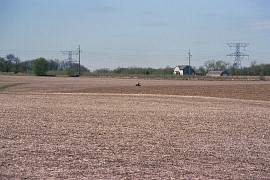
A farm lad out on his four wheeler. These machines are often used by farmers to check field status.
|
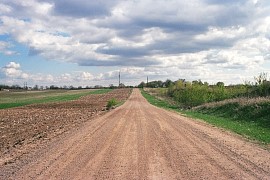
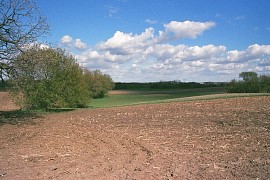
Male pheasants have been making their spring "Cuk Cuk" call for a few weeks now. I usually hear
at least one when I walk by the gravel pit. As a result, the hens know where the rooster is, but
so do predators.
|
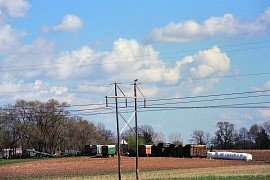
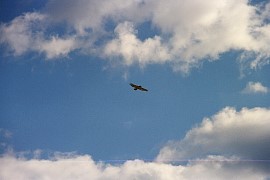
A hawk uses a power line tower as a perch.
|